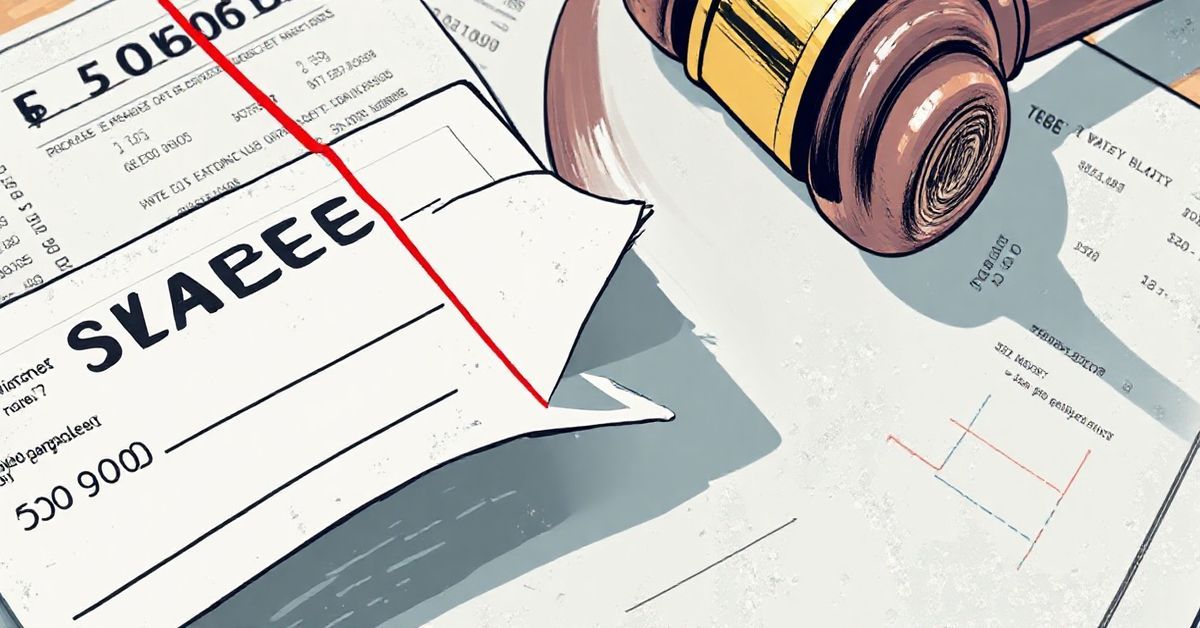Understanding Wage Garnishment
Wage garnishment can be a scary thing to face, but understanding how it works can help you navigate the situation. It essentially means a chunk of your paycheck is automatically sent to someone else, usually a creditor you owe money to. Let’s break down what this really means.
What Causes Wage Garnishment?
Generally, wage garnishment doesn’t happen out of the blue. It’s the result of an ongoing debt you haven’t been able to resolve. Here are some typical reasons why a wage garnishment order might be issued:
Unpaid Taxes
- Federal Taxes: If you owe money to the IRS and don’t make payment arrangements, they can pursue wage garnishment. They’re pretty serious about getting their money, and they have the power to go straight to your employer.
- State Taxes: Similar to the IRS, state tax authorities can also garnish your wages for unpaid state taxes. This varies by state, but it’s a common enforcement method.
- Local Taxes: In some areas, local governments may also have the power to garnish wages for unpaid local taxes.
Debts & Loans
- Credit Card Debt: If you have a significant amount of unpaid credit card debt, the creditor can go to court to obtain a judgment that allows them to garnish your wages.
- Personal Loans: Unpaid personal loans, whether from a bank or another lender, can lead to wage garnishment.
- Student Loans: Defaulted federal student loans are a common reason for wage garnishment, and they don’t always require a court order.
- Medical Bills: If you have significant outstanding medical bills and they go to a collection agency, they might eventually pursue wage garnishment.
Child Support and Alimony
- Child Support: If you fail to pay court-ordered child support, wage garnishment is a very common and immediate action to ensure payments are made.
- Alimony: Similarly, unpaid alimony payments can also result in wage garnishment.
Court Judgments
- Lawsuits: If you lose a lawsuit and are ordered to pay damages, the winning party can sometimes use wage garnishment to get their money.
How Wage Garnishment Works: The Nitty-Gritty
The process of wage garnishment usually unfolds in a few steps:
- Delinquent Debt: First, you have to have a debt that’s significantly past due.
- Notice: The creditor (the person or entity you owe) will usually make an effort to collect before resorting to garnishment. You’ll receive notifications, often in the form of letters, phone calls or email.
- Court Judgment: If attempts to collect fail, the creditor will often seek a judgment against you in court. This judgment is basically a court order saying you owe the money.
- Garnishment Order: With a court judgment in hand, the creditor can then request a wage garnishment order from the court. This order tells your employer that they need to start taking a portion of your wages.
- Employer Notification: Your employer receives the garnishment order, which outlines how much money they need to withhold from each paycheck and where they need to send it.
- Wage Deduction: Your employer will start taking the specified amount from your paycheck and sending it to the creditor or a collection agency.
- Continuing Deductions: The garnishment continues until the debt, plus any associated fees, is fully paid off.
How Much Can They Take From Your Paycheck?
The amount that can be garnished from your wages is not unlimited. The law puts restrictions on how much can be taken. These limitations are designed to protect your ability to still meet your basic living needs.
- Federal Limits: The federal Consumer Credit Protection Act (CCPA) limits the amount that can be garnished from your disposable earnings. Disposable earnings are your earnings after mandatory deductions like taxes. The limit is typically 25% of your disposable earnings or the amount by which your disposable earnings exceed 30 times the federal minimum wage (whichever is less).
- State Laws: Many states have their own laws that can be stricter than the federal limits, offering additional protection to workers. Some states might allow for less garnishment than the federal standard. It is best to check the specific laws in your state.
Special Rules
- Federal tax debts: These can have a much higher garnishment percentage, potentially taking up to 70%.
- Child Support: Garnishment amounts for child support can also be higher, depending on specific court orders and state laws.
Who is Affected by Wage Garnishment?
Wage garnishment affects anyone who has outstanding debts that have gone to collections and where a court order has been obtained. This can impact a wide range of people.
- Individuals with Unpaid Taxes: If you haven’t paid your federal, state, or local taxes, you’re at risk.
- People with Credit Card Debt: High credit card balances can quickly lead to garnishment if left unpaid.
- Those with Medical Debt: Medical debt can sometimes lead to wage garnishment if the debt is sold to a collection agency.
- Parents with Unpaid Child Support: This is one of the most common reasons for wage garnishment.
- People with Personal and Student Loans: Defaulting on loan payments can lead to wage garnishment.
Related Terms and Concepts
- Levy: A levy is similar to garnishment but often applies to assets, such as bank accounts, rather than wages.
- Judgment: A court order stating that you owe a certain amount of money to a creditor.
- Disposable Earnings: The portion of your wages left after legally required deductions, which is what wage garnishment is based on.
- Creditor: A person or entity to whom you owe money.
- Collection Agency: A company that tries to collect money for creditors.
How to Avoid Wage Garnishment
Prevention is always better than having your wages garnished. Here’s what you can do:
- Pay Your Debts: This is the most obvious one, but staying on top of your bills and making payments on time is the best way to avoid garnishment.
- Communicate With Creditors: If you’re struggling to pay a debt, talk to the creditor right away. They might be willing to work out a payment plan with you.
- Seek Professional Help: If you have lots of debt, consider consulting with a credit counselor or a debt management specialist who can help you create a plan.
- File Your Taxes Correctly: Make sure you are filing all of your tax returns accurately and on time to avoid tax-related garnishments. If you owe, explore payment plans with tax authorities.
- Set Up Payment Plans: If you are falling behind on a debt, it may be beneficial to seek out payment plan options with the creditor.
- Review Your Budget: Make sure you’re living within your means, and see where you can cut back to reduce your debt load.
Common Misconceptions About Wage Garnishment
- Your employer is doing something wrong: Your employer is actually legally obligated to withhold your wages once a valid garnishment order is in place. They are just following the legal process.
- Only taxes can cause wage garnishment: That’s not true. As you’ve seen, many different types of debts can lead to wage garnishment.
- Once garnished, you’re always garnished: While garnishment can be ongoing, it stops when the debt is paid, and you may be able to negotiate or settle the debt for less.
What to Do If You’re Facing Wage Garnishment
- Don’t ignore the order: Ignoring the wage garnishment order won’t make it go away.
- Review the order carefully: Make sure the information is accurate, and verify the creditor’s claims.
- Contact the creditor: It might be possible to work out a payment plan or negotiate a settlement.
- Consult a professional: If you’re overwhelmed, consider getting advice from a financial advisor or a tax professional.
- Understand your rights: Each state has laws in place to protect your rights. Become familiar with your local laws, especially regarding garnishment limits.
Wage garnishment can be tough, but understanding the process and taking proactive steps can help you navigate it and avoid it in the future. Remember to communicate with creditors and take action sooner rather than later.

